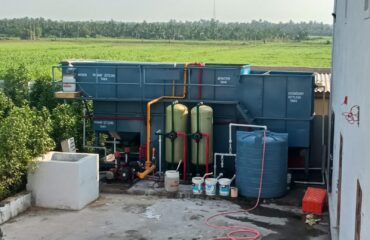Introduction
Ajmer, a city steeped in history and culture, is also experiencing urbanization and industrialization. With these advancements, the proper management of wastewater has become a critical concern. The establishment of an Effluent Treatment Plant (ETP) in Ajmer is a vital step towards ensuring a clean and sustainable environment for the city’s present and future generations.
Understanding ETPs
An Effluent Treatment Plant (ETP) serves as a guardian of the environment by treating wastewater before it is released into natural water bodies. It plays a pivotal role in removing pollutants, contaminants, and toxic substances, thereby preventing ecological damage and safeguarding public health.
Benefits of ETPs in Ajmer
1. Environmental Conservation
The picturesque lakes and rivers surrounding Ajmer are susceptible to contamination from untreated wastewater. ETPs act as barriers, ensuring that harmful substances are removed before the water is discharged, thus preserving the city’s natural beauty.
2. Health and Safety
Untreated wastewater carries the risk of spreading waterborne diseases and polluting groundwater sources. ETPs mitigate these risks by treating wastewater to a level that makes it safe for the environment and human health.
3. Compliance with Regulations
National and local regulations emphasize the importance of treating industrial and domestic wastewater before disposal. ETPs help industries in Ajmer meet these regulations, promoting responsible waste management practices.
4. Resource Recovery
Treated water from ETPs can be repurposed for non-potable applications such as irrigation, industrial processes, and cooling. This promotes water conservation and reduces the demand for freshwater resources.
Components of ETPs
- Preliminary Treatment: Removal of large debris and grit from wastewater to prevent damage to downstream equipment.
- Primary Treatment: Sedimentation tanks allow heavier solids to settle, reducing the organic load in the wastewater.
- Secondary Treatment: Microorganisms break down organic matter through biological processes, enhancing water quality.
- Tertiary Treatment: Advanced techniques like filtration and disinfection further purify the water.
- Effluent Reuse or Discharge: Treated water is either released into water bodies or used for various applications, minimizing environmental impact.
Challenges and Solutions
- Community Engagement: Raising awareness among residents about the importance of proper waste disposal and the role of ETPs can encourage responsible behavior.
- Technological Upgrades: Embracing innovative technologies and continuous monitoring can enhance the efficiency and effectiveness of ETPs.
- Collaboration: Close cooperation between industries, government agencies, and environmentalists can lead to more effective waste management strategies.
Conclusion
The establishment of an Effluent Treatment Plant in Ajmer signifies the city’s commitment to progress while preserving its natural heritage. ETPs are not just treatment systems; they are guardians of the environment, ensuring that the city’s water resources remain pristine. By investing in these plants, Ajmer demonstrates its dedication to a cleaner, healthier, and more sustainable future.





